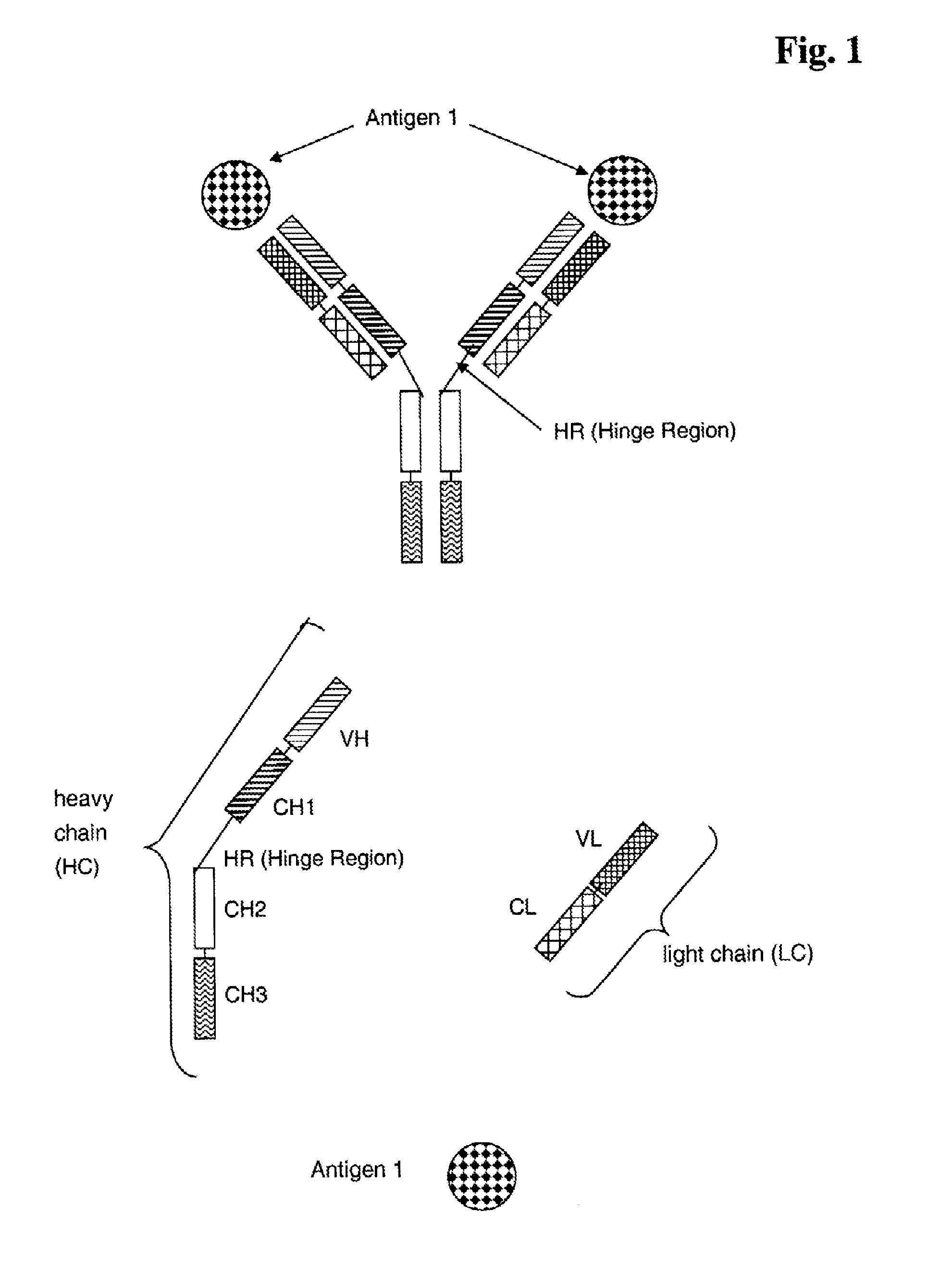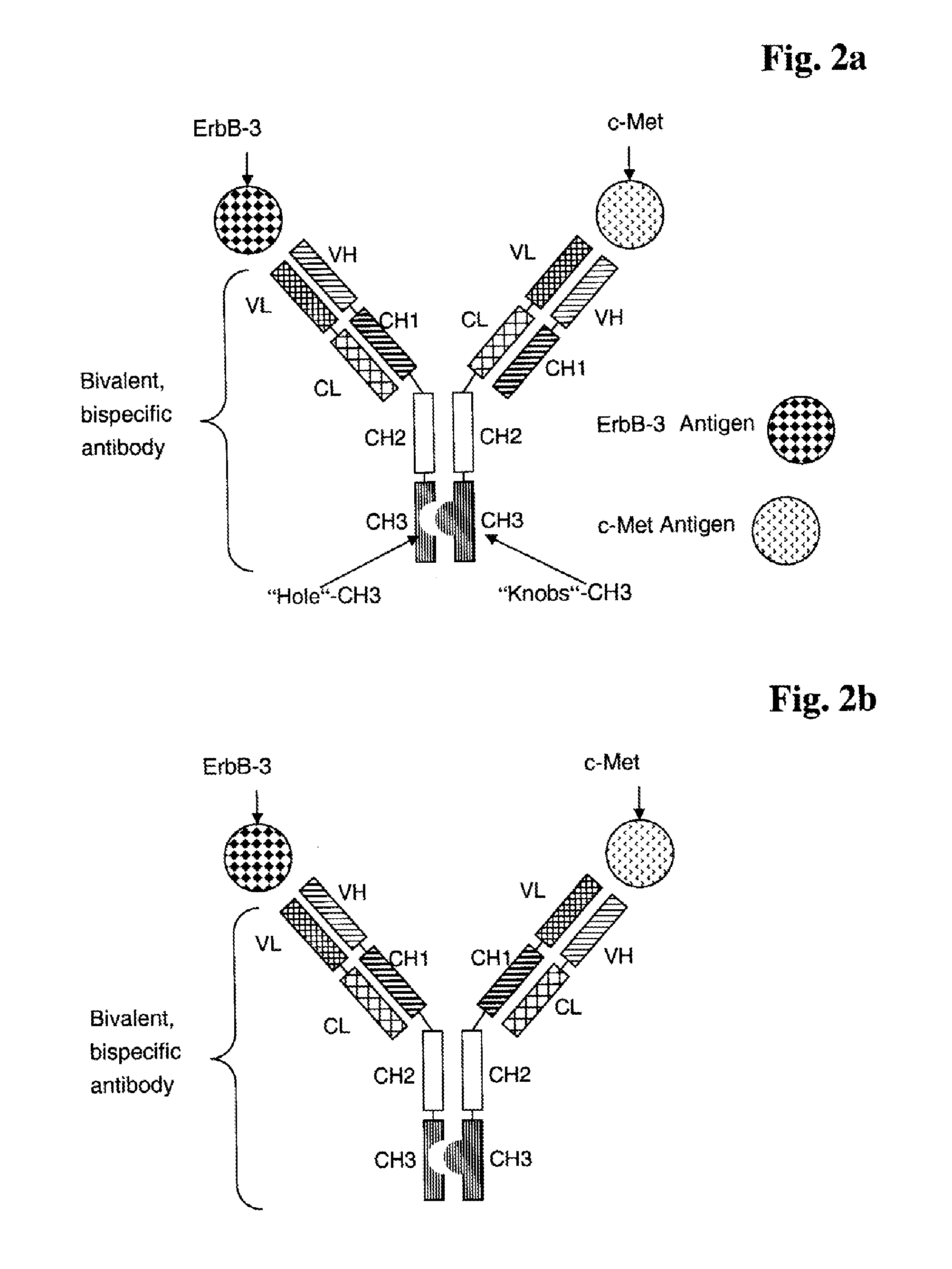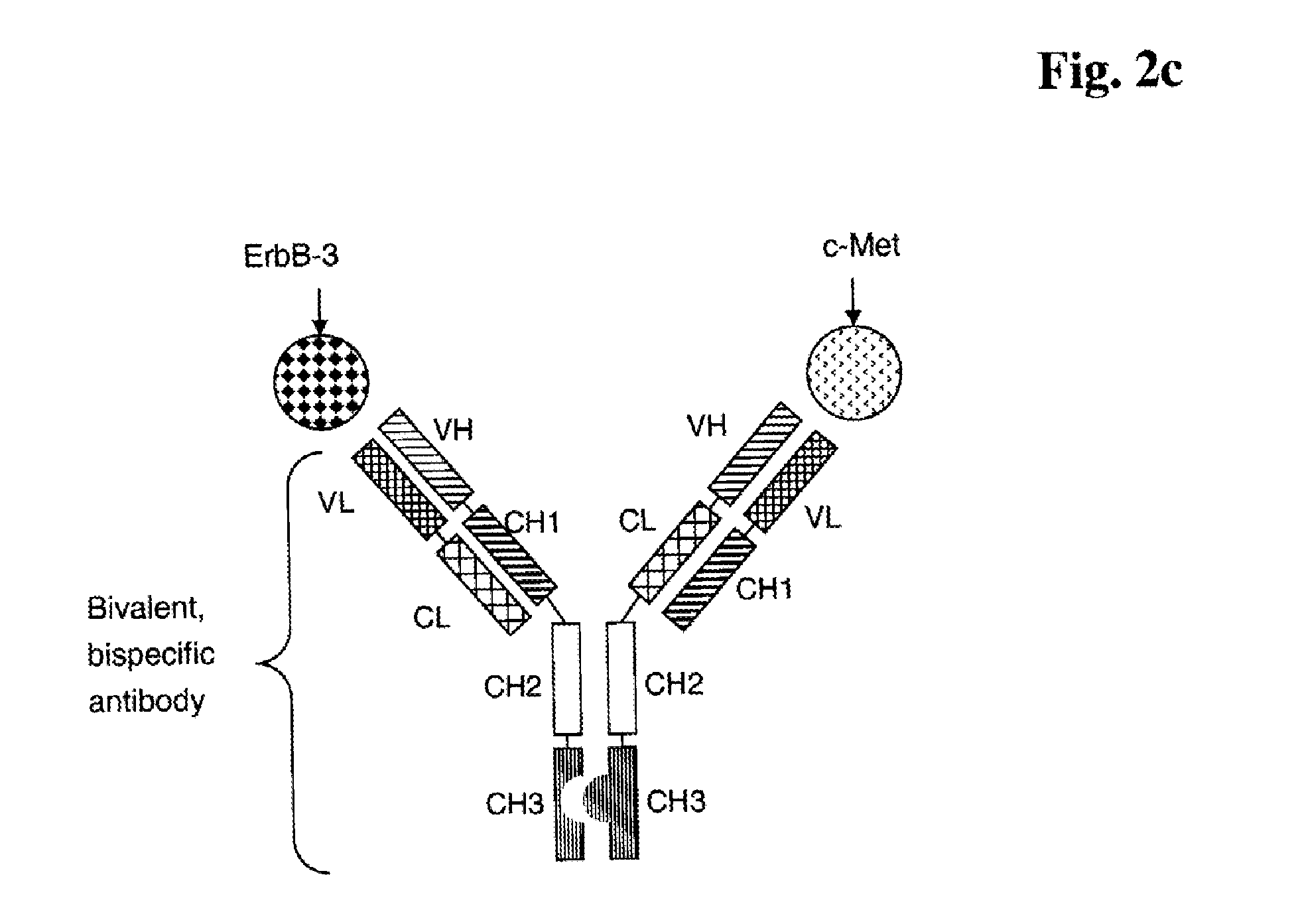Bispecific Anti ErbB3 / Anti cMet Antibodies
a technology of erbb3/cmet antibodies and cmet antibodies, which is applied in the field of bispecific anti erbb3/cmet antibodies to achieve the effect of reducing the internalization of erbb3/antibody and high valu
- Summary
- Abstract
- Description
- Claims
- Application Information
AI Technical Summary
Benefits of technology
Problems solved by technology
Method used
Image
Examples
example 1
FIG. 8
Binding of Bispecific Antibodies to the Cell Surface of Cancer Cells
[0285]The binding properties of the bispecific antibodies to their respective receptor on the cell surface was analyzed on A431 cancer cells in a flow cytometry based assay. Cells were incubated with the mono- or bispecific primary antibodies and binding of these antibodies to their cognate receptors was detected with a secondary antibody coupled to a fluorophor binding specifically to the Fc of the primary antibody. The mean fluorescence intensity of a dilution series of the primary antibodies was plotted against the concentration of the antibody to obtain a sigmoidal binding curve. Cell surface expression of c-Met and Her3 was validated by incubation with the bivalent 5D5 and Her3 clone 29 antibody only. The Her3 / c-Met_KHSS antibody readily bind to the cell surface of A431. Under these experimental settings, the antibody can only bind via its Her3 part and consequently the mean fluorescence intensity does no...
example 2
FIG. 9
[0286]Inhibition of HGF-Induced c-Met Receptor Phosphorylation by Bispecific Her3 / c-Met Antibody Formats
[0287]To confirm functionality of the c-Met part in the bispecific antibodies a c-Met phosphorylation assay was performed. In this experiment A549 lung cancer cells or HT29 colorectal cancer cells were treated with the bispecific antibodies or control antibodies prior exposure to HGF. Cells were then lysed and phosphorylation of the c-Met receptor was examined. Both cell lines can be stimulated with HGF as can be observed by the occurrence of a phospho-c-Met specific band in the immunoblot. Addition of the scFv antibody or the 5D5 Fab fragment inhibits receptor phosphorylation demonstrating functionality of the c-Met scFv component.
example 3
FIG. 10
[0288]Inhibition of HRG-Induced Her3 Receptor Phosphorylation by Bispecific Her3 / c-Met Antibody Formats
[0289]To confirm functionality of the Her3 part in the bispecific antibodies a Her3 phosphorylation assay was performed. In this experiment MCF7 cells were treated with the bispecific antibodies or control antibodies prior exposure to HRG (Heregulin). Cells were then lysed and phosphorylation of the Her3 receptor was examined. Her3 / c-Met_scFV SSKH and Her3 / c-Met_KHSS inhibit Her3 receptor phosphorylation to the same extent as the parental Her3 clone29 indicating that Her3 binding and functionality of the antibody are not compromised by the trivalent antibody format.
PUM
| Property | Measurement | Unit |
|---|---|---|
| Time | aaaaa | aaaaa |
| Fraction | aaaaa | aaaaa |
| Molar density | aaaaa | aaaaa |
Abstract
Description
Claims
Application Information
 Login to View More
Login to View More - R&D
- Intellectual Property
- Life Sciences
- Materials
- Tech Scout
- Unparalleled Data Quality
- Higher Quality Content
- 60% Fewer Hallucinations
Browse by: Latest US Patents, China's latest patents, Technical Efficacy Thesaurus, Application Domain, Technology Topic, Popular Technical Reports.
© 2025 PatSnap. All rights reserved.Legal|Privacy policy|Modern Slavery Act Transparency Statement|Sitemap|About US| Contact US: help@patsnap.com



